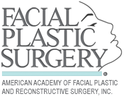Facial Skin Cancer Doesn’t Have to Leave Its Mark

A diagnosis of skin cancer is overwhelming enough—hearing that it’s on your face adds an entirely different level of concern. Understandably, many patients worry not just about their health, but about how treatment might affect their appearance. Will the scar be noticeable?
Will it change how I look or how others see me?
At the Beverly Hills Center for Plastic & Laser Surgery, Dr. Ben Talei offers an advanced and compassionate approach to facial skin cancer reconstruction. As a double board-certified facial plastic and reconstructive surgeon, Dr. Talei specializes in preserving what matters most to patients—their identity—while restoring both form and function after cancer removal.
Let’s take a closer look at how Mohs reconstruction works and how, with the right expertise, facial skin cancer doesn’t have to leave a lasting mark.
The Gold Standard: Mohs Surgery for Skin Cancer
Mohs micrographic surgery is widely considered the most precise method of removing skin cancer. During this procedure, a dermatologic surgeon removes the cancerous tissue in layers, examining each one under a microscope until only healthy cells remain. The result is maximum tissue preservation and an impressively high cure rate.
But Mohs surgery, while effective at removing the cancer, doesn’t focus on the aesthetic or structural repair that follows. That’s where Dr. Talei steps in—with a personalized plan for rebuilding what cancer removed and doing so with artistry and precision.
What Happens After the Cancer is Removed?
Once Mohs surgery is complete, patients are often left with a visible defect—anything from a small indentation to a more significant disruption of the facial features. Depending on the cancer’s location, it may involve delicate structures such as:
- The nose or nasal tip
- The eyelids or corners of the eyes
- The lips or mouth
- The cheeks or chin
- The forehead or brow
Even small imperfections in these areas can significantly impact symmetry, function, and expression. Mohs reconstruction is about more than closing a wound—it’s about restoring harmony to the face.
Why Choose a Facial Plastic Surgeon for Reconstruction?
Reconstructive surgery after Mohs is one of the most delicate and demanding procedures in plastic surgery. It requires a deep understanding of facial anatomy, structure, and aesthetics—something that goes far beyond general plastic surgery.
Dr. Ben Talei’s experience focuses exclusively on the face. His extensive training, combined with an artist’s eye and an empathetic approach, makes him uniquely equipped to handle even the most complex cases of facial reconstruction. Whether you’re dealing with a fresh defect or seeking improvement after a previous reconstruction, Dr. Talei’s goal is always the same: to help you look like yourself again.
What to Expect: The Reconstruction Process
Every case is different, but the goal remains constant: natural-looking restoration that blends seamlessly into your features.
Step 1: Personalized Planning
Dr. Talei begins with a thorough evaluation, often in coordination with your Mohs surgeon. He’ll assess the location and depth of the defect, your skin type and tone, and the surrounding features to determine the best strategy. You’ll also have time to discuss your aesthetic goals and ask any questions you may have.
Step 2: Surgical Reconstruction
Dr. Talei uses several refined techniques to reconstruct the face, including:
- Local Flaps: This involves repositioning healthy nearby tissue to cover the wound. Flap techniques are often used on the nose, eyelids, and lips, where color and texture matching is critical.
- Skin Grafting: In some cases, skin from a less visible area (like behind the ear or neck) is used to fill the defect.
- Structural Grafting: For areas that require support, like the nose or lips, cartilage from the ear or rib may be used to rebuild form and function.
- Staged Reconstruction: Complex cases may be completed in stages to allow for healing and refinement over time.
Every technique is performed with care, using hidden or natural creases to minimize the visibility of scars and ensure proper healing.
Step 3: Recovery and Refinement
Patients typically experience minimal discomfort, and many return to regular activities within a week. Bruising and swelling are expected initially but fade quickly. Dr. Talei may recommend post-op laser treatments or other techniques to refine scars and enhance final results.
His team will guide you every step of the way, offering personalized aftercare to ensure you heal beautifully.
The Emotional Impact: Healing More Than Just Skin
Facial skin cancer can be emotionally traumatic. For many patients, the idea of losing part of their nose, lip, or eye area can feel deeply personal. Dr. Talei understands this, which is why his approach to reconstruction is as much emotional as it is technical.
He takes time to listen to his patients’ concerns, set realistic expectations, and build a treatment plan that respects both their health and their self-image. With compassion, communication, and expert execution, Dr. Talei helps patients move forward—not with reminders of cancer, but with restored confidence.
Frequently Asked Questions About Mohs Reconstruction
- Will I have a visible scar? Every effort is made to hide or minimize scarring. Many patients are pleasantly surprised at how well their incisions fade and blend into natural lines and contours.
- When should reconstruction be done? In most cases, reconstruction is performed immediately after Mohs surgery. In more complex cases, Dr. Talei may recommend waiting a few days to allow swelling to subside.
- Can I combine reconstruction with cosmetic enhancements? Yes, many patients choose to refine their overall appearance during reconstruction with treatments like laser resurfacing, fillers, or skin tightening.
- What if I’ve already had a poor reconstruction elsewhere? Dr. Talei frequently treats patients seeking revision reconstruction. Even if you’ve had prior work done, it’s often possible to improve symmetry, texture, and overall results.
Reclaim Your Face and Confidence with Expert Mohs Reconstruction
At the Beverly Hills Center for Plastic & Laser Surgery, Dr. Ben Talei has helped countless patients heal both physically and emotionally after facial skin cancer. With an unmatched blend of precision, artistry, and compassion, Dr. Talei transforms reconstruction into a process of restoration—not just of skin, but of self.
Don’t let facial skin cancer define your appearance. With the right surgeon, you can face the future with strength, beauty, and confidence.
Contact us today to schedule your consultation with Dr. Ben Talei. Your face deserves expert care—and a result that leaves no trace of what you’ve overcome.
















